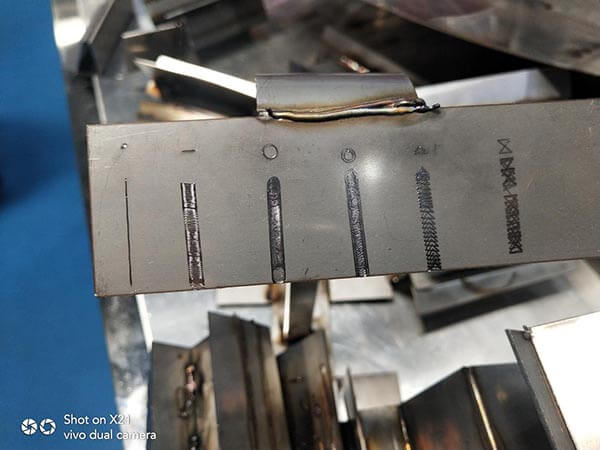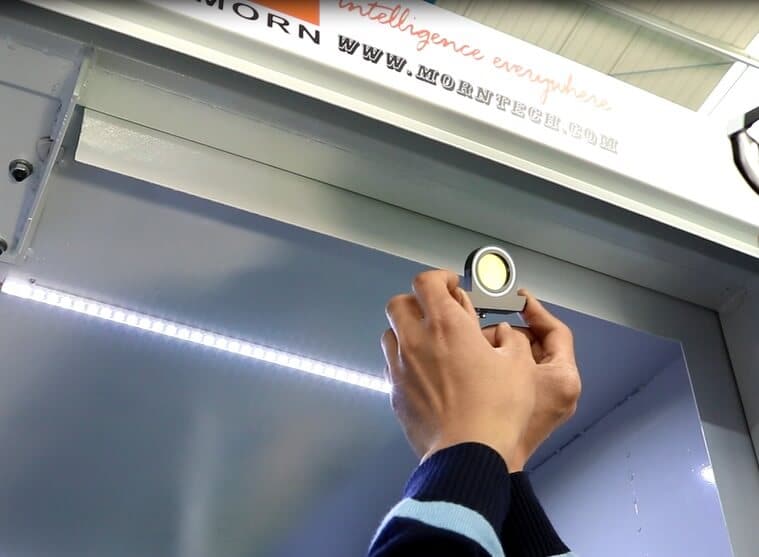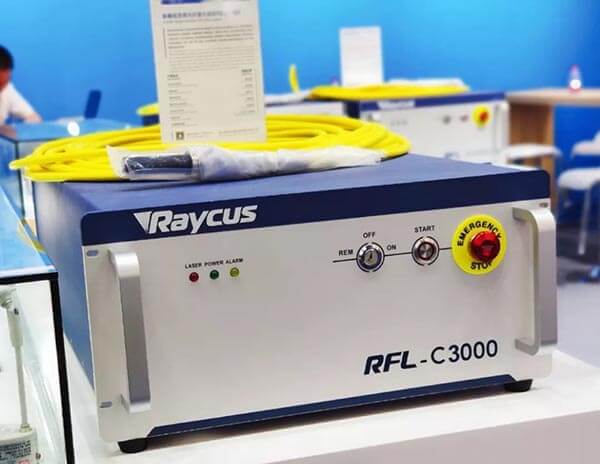Table of Contents
Upgraded version of handheld laser welding machine, dual drive swing/wobble welding head
Our handheld laser welding machine have been loved by customers since they were launched. For thanks the customers, our technical team researches the best laser welding equipment day and night. After continuous testing and improvement, we launched the latest dual-drive swing/wobble welding machine. The following is a brief introduction of the dual-drive swing welding machine.
The signal status display in the latest software operation page: shutter, gas, welding gun status, conduction status, laser head status
- Shutter: control the light signal of the laser switch. (In normal use, the light signal is effective when the shutter button is opened, and the shutter button will automatically close after 15 minutes without operation)
- Gas: For gas control, when a proportional valve is installed, the percentage control is effective.
- Welding gun status: refers to the light trigger button on the gun head, and the light is on when the trigger button is activated.
- Conduction state: refers to the loop signal generated by the gun head when it touches the metal plate. (When the gun head touches the metal plate with alligator clip, the conduction signal light is on. This signal is the light-emitting protection function, and short circuiting is prohibited)
- Laser head status: refers to the state of the laser gun head motor. (This light is on when the motor is normally powered on for communication, and when the motor is faulty and not working, the signal light is off and the gun head LCD screen displays E signal to alarm, the light signal is locked and the light is triggered Button is invalid)
Control section on the page: laser control, laser head control and gas control
Laser control: 1. Power: 0-100% 2. Frequency: 50-30000HZ 3. Duty ratio: 0-100%
Suggestion: Choose the appropriate laser power according to different material thickness. The recommended frequency is 3000-5000HZ. Duty cycle: According to the requirements of welding penetration. The duty cycle can be reduced appropriately when the thin plate does not penetrate through the welding.
Laser head control: 1. Mode: dot, line, circle, double O, triangle, figure eight (newly added 3 kinds of spot patterns, a total of 6 different spot shape options) 2. Frequency: refers to the motor speed (2 -46HZms) is adjustable, where 1HZ=10 circles are calculated. 3. Width: refers to the size of the light spot, (0.2-5mm) adjustable. Suggestion: Dot mode: refers to the state where the motor does not swing and the light spot is the smallest. With strong penetration, it can be used for penetration welding, stitch welding, or thicker materials.
Linear mode: refers to swing a motor, connect the dots into a line, the direction width can be adjusted, the energy density is concentrated, it can have a certain penetration force to the thick plate, and it is used for the tailor welding of positive fillet welding.
Circular mode: It swings 2 motors and turns the dots into different spot modes. The diameter can be adjusted, the energy density is uniform, and the thin plate welding has obvious advantages. The minimum 0.3mm thin plate welding. For tailor welding and female fillet welding.
Double O, triangle and figure eight: two motors oscillate, the main function is to reduce the hollow of the light spot, so that the laser dispersion range is wider, and the light radiation range of the plate is larger and more uniform.
Gas control: The gas advance and delay are recommended to be set at about 150ms to protect the welding fume from polluting the protective lens. Proportional valve, when connected to the proportional valve, the gas can be controlled in percentage to be effective.





